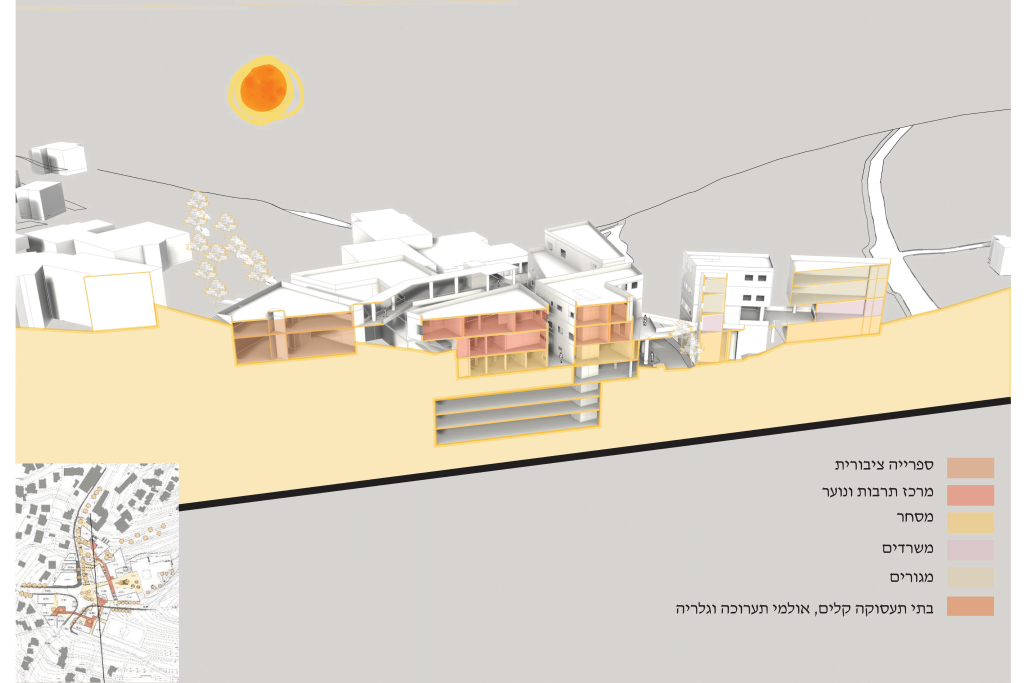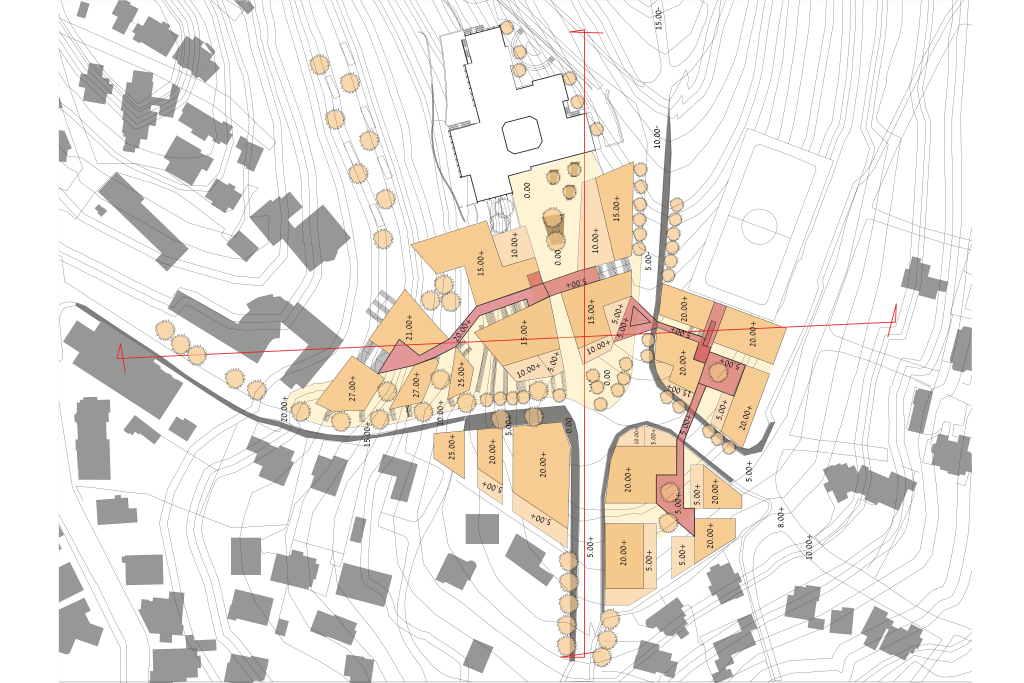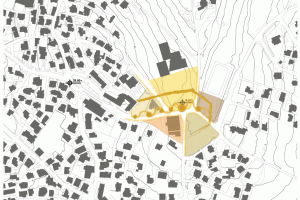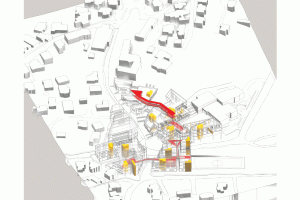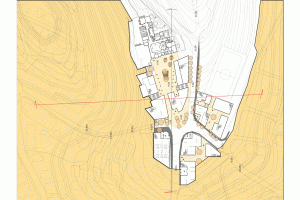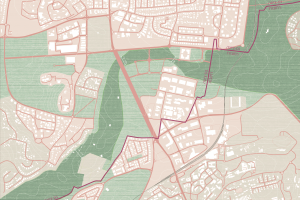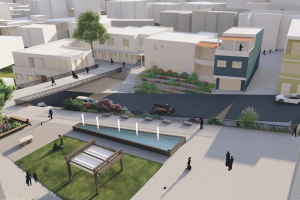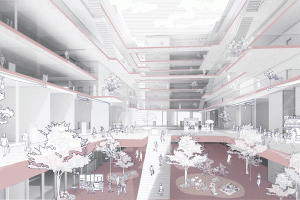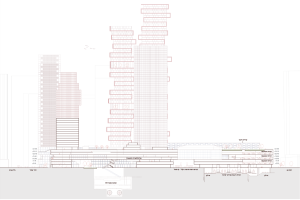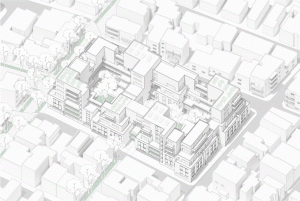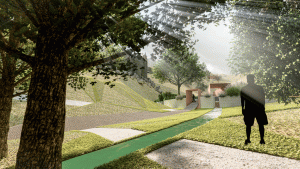A Civic Center Reconstructed
The centers of Arab towns and villages in Israel currently present a spatial and planning challenge because they suffer from spatial disorder, which stems from historical and social reasons such as their informal development and lack of comprehensive planning as well as a policy of demarcating the towns after 1948 to limit their spatial expansion. Before 1948, traditional centers in Arab towns were usually courtyards surrounded by buildings. There were an integral part of the village that gave a sense of place and encouraged walking.
Today, one can easily notice the spatial disorder in the centers of the Arab settlements, which is expressed in high building density and a lack of variety in the type of construction. These characteristics are particularly noticeable in the civic centers that formed around or along a main commercial axis in the town. Such areas are usually characterized by a density of residential buildings with a commercial ground floor and a lack of public parking and open public areas. These are factors lead to disorder that creates a space that does not encourage walking.
The project therefore asks how planning principles that encourage walkability can help in the reconstruction of Arab village centers in Israel.
The village of Eilaboun is located in the northeast of the country, contains about 5,000 inhabitants, and is characterized by a changing mountainous topography. The village’s civic center is spread over two main streets: one is the commercial axis in the village, and the other is a street containing several public functions. However, there are many unplanned areas in the street.
The second street is a serious challenge in terms of walking because of its sloping topography that varies about twenty meters. In addition to a lack of commercial facades that can establish contact with the street, there are several high retaining walls that divide the space and a significant lack of public open areas and street shading. With the expansion of the village to the north and east, the importance of this civic center has increased, and it must be designed and condensed according to the needs of the public.
The project deals with how to build a significant public space that bridges the problematic topography, is walkable, and offers the village residents a real public-civic space.





